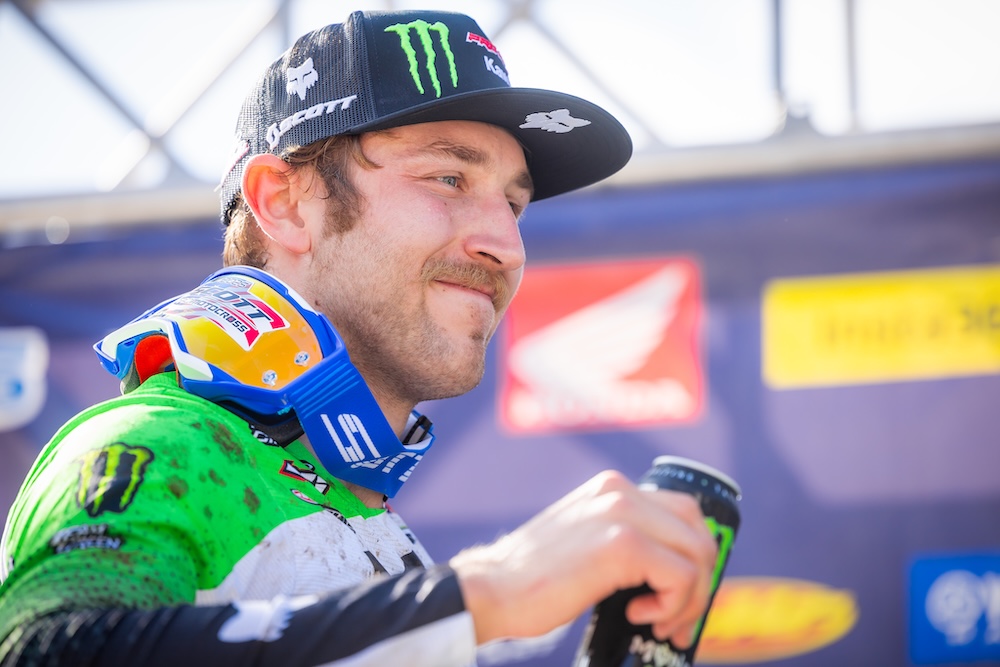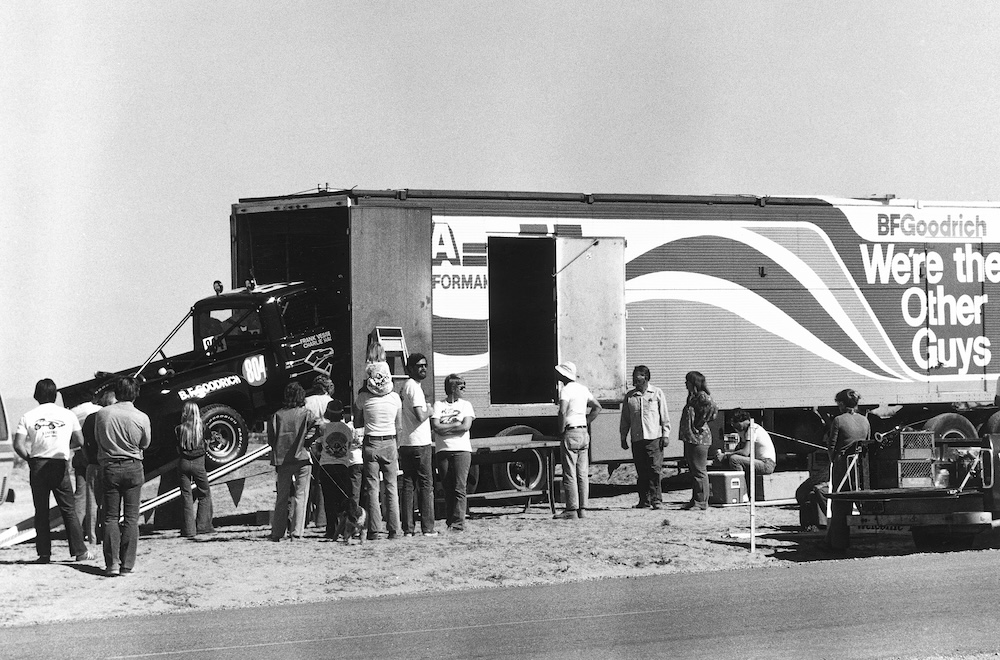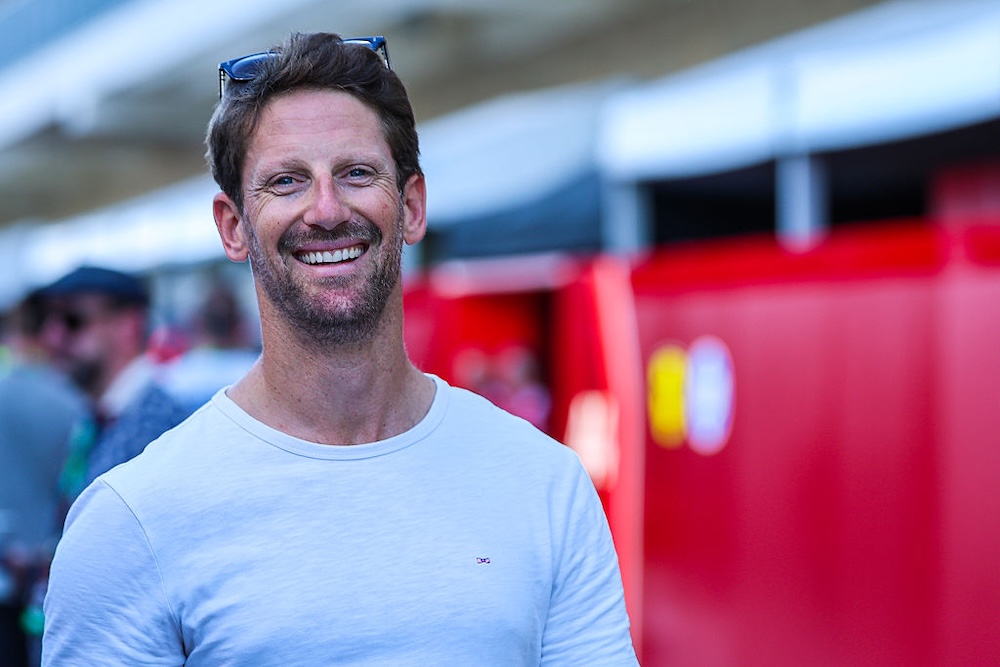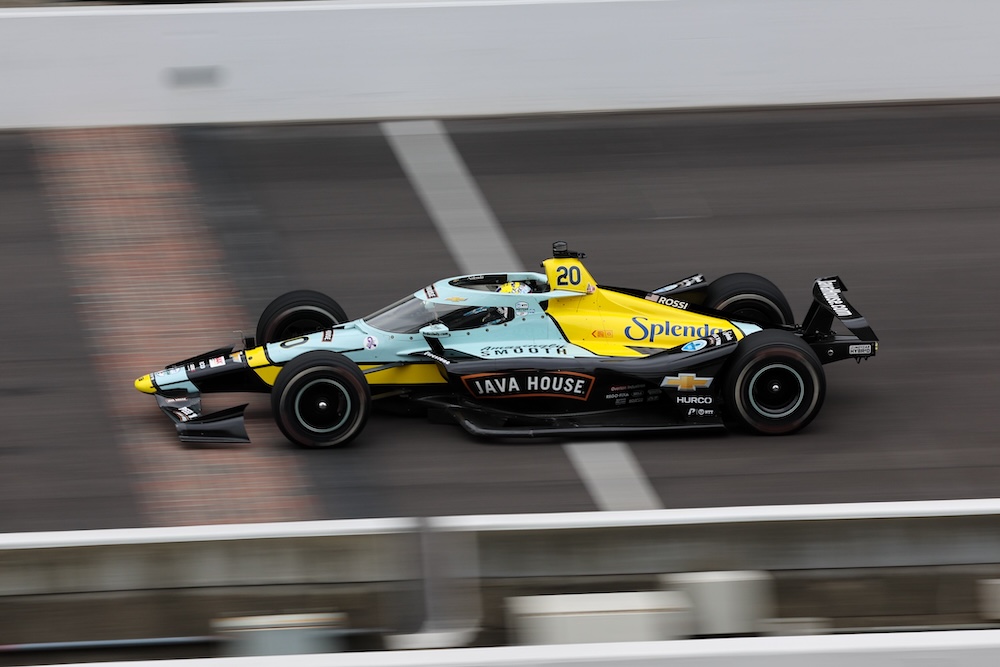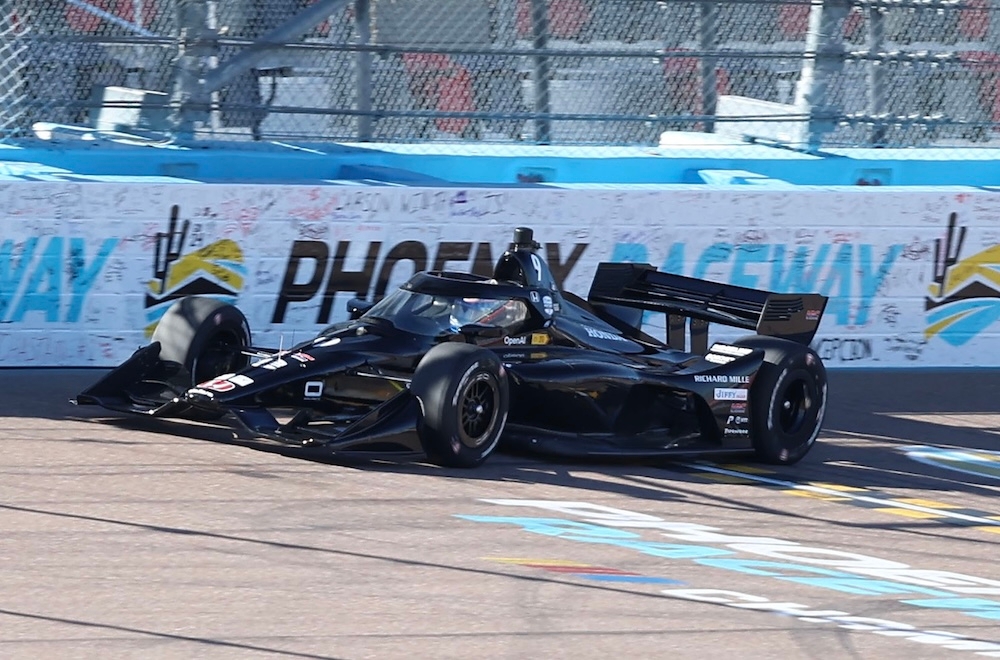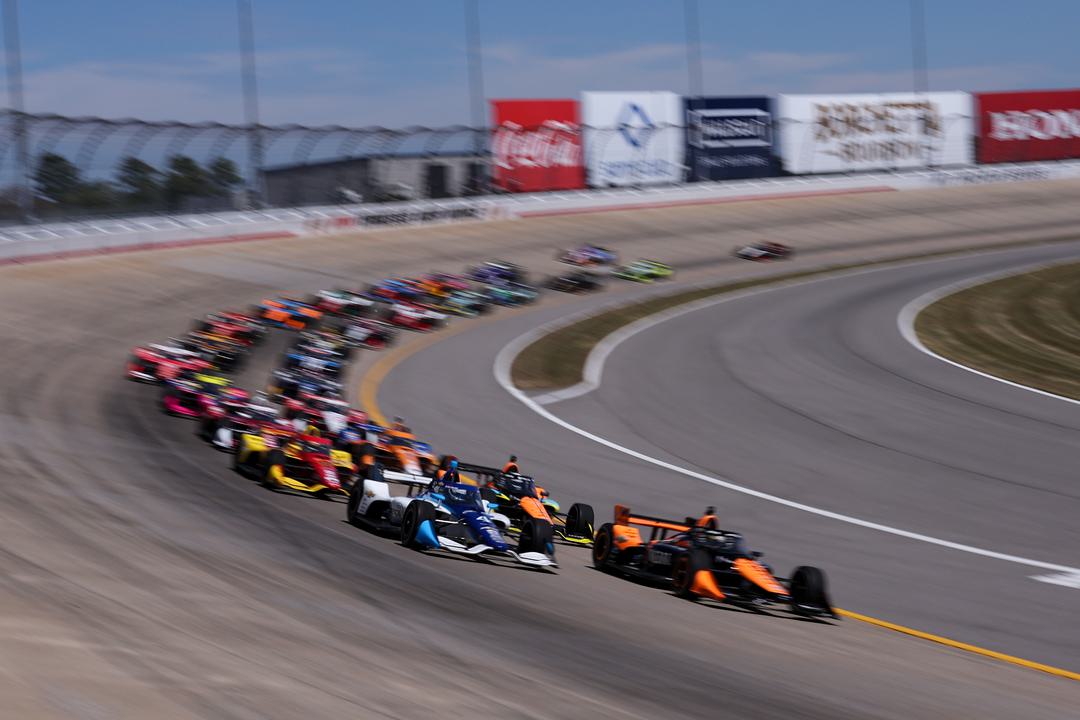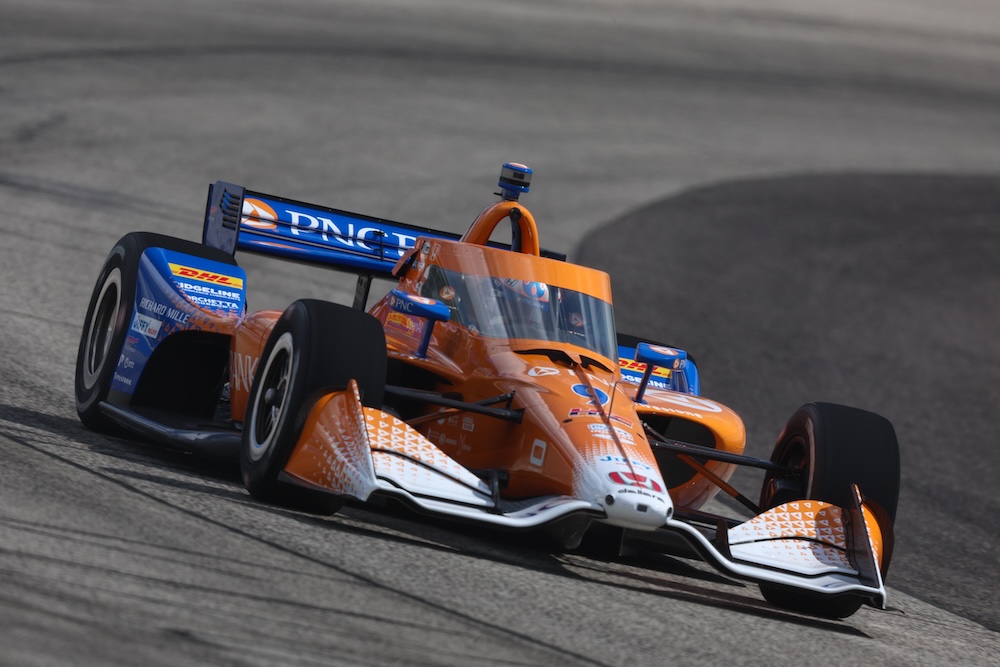
Joe Skibinski/Penske Entertainment
ShareThis is disabled until you accept Social Networking cookies.
IndyCar prepares for Phoenix testing ahead of 2026 return
IndyCar’s return to the one-mile Phoenix Raceway oval will take place on Thursday and Friday as the series and Firestone test a range of tire and technical specification options for the March 7 event.
Chip Ganassi Racing’s Scott Dixon, who won the 2016 edition of the event in the No. 9 Chevy, and Alexander Rossi, a podium finisher in 2019 with the No. 28 Andretti Autosport Honda, will handle the testing duties with Dixon in the No. 9 CGR Honda and Rossi in the No. 20 Ed Carpenter Racing Chevy.
Next year’s event will happen as part of NASCAR’s visit to the historic venue in Avondale, Arizona, which settled the stock car organization’s championships last weekend on the reconfigured circuit. IndyCar last stint at Phoenix took place from 2016-2018 with cars and a track that were vastly different from what’s in place today.
In fact, IndyCar’s last race at Phoenix, held on April 7, 2018, which had Sebastien Bourdais on pole and was won by Josef Newgarden, marked the final event for the venue before the infield was razed and the track was both repaved and altered to re-number the corners by making the former Turn 3 the new Turn 1.
Significant paving below the new Turn 4 and the creation of the ‘Dogleg’ where stock cars are allowed to run below the banking has added a unique wrinkle to the Phoenix oval. NASCAR drivers have also been given permission to run below the yellow line on the flat section inside Turns 1 and 2.
Due to the lower ride height run in IndyCar and the hard underbody contact made in the transition from Phoenix’s banking to the flat inner sections, Dixon and Rossi are expected to stay above the yellow line and run the traditional path around the oval.
The Nos. 9 and 20 Dallara DW12s will present an interesting technical challenge for the series and Firestone to solve at Phoenix.
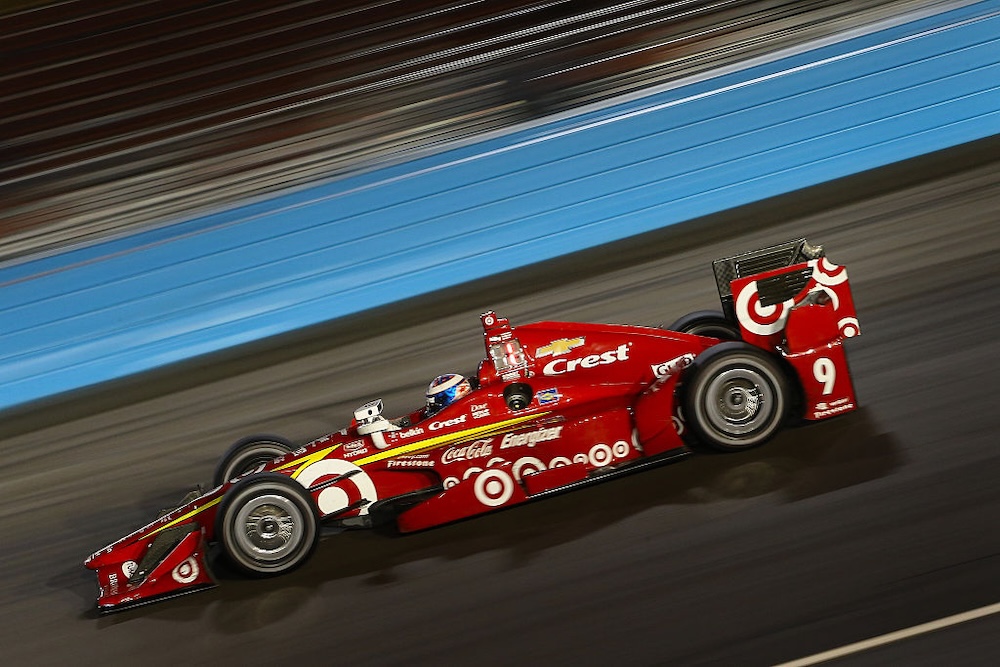
Dixon won at Phoenix in 2016. Christian Petersen/Getty Images
From 2016-’17, IndyCar’s formula made use of custom manufacturer aero kits developed by Chevy and Honda, which Chevy mastered with a high-downforce short-oval package it used to win with Dixon in ’16 and Simon Pagenaud in 2017. For 2018, IndyCar’s then-new universal aero kit replaced the custom bodywork, and while it’s still in use, the rest of the car has been drastically altered and gained more than 150 pounds with the addition of the aeroscreen driver safety device in 2020 and the inclusion of an energy recovery system in 2024.
Together, the aeroscreen and hybrid powertrain will reintroduce the DW12 to Phoenix as the heaviest IndyCar to run at the facility since the first IndyCar race was held in 1964. Despite the somewhat recent repaving, the modest banking and surface wear is expected to cause advanced tire degradation, which will be an important testing item to benchmark later this week. Shorter runs are planned for Thursday and longer runs will likely be held for Friday. Downforce packages will also be tried at the test.
A second Phoenix test is planned for January, when the learnings from Thursday and Friday will be applied and used to refine the final car and tire specifications for the combo NASCAR and IndyCar race in March.
Topics
ShareThis is disabled until you accept Social Networking cookies.
Marshall Pruett
The 2025 season marks Marshall Pruett's 39th year working in the sport. In his role today for RACER, Pruett covers open-wheel and sports car racing as a writer, reporter, photographer, and filmmaker. In his previous career, he served as a mechanic, engineer, and team manager in a variety of series, including IndyCar, IMSA, and World Challenge.
Read Marshall Pruett's articles
Latest News
Comments
Disqus is disabled until you accept Social Networking cookies.
